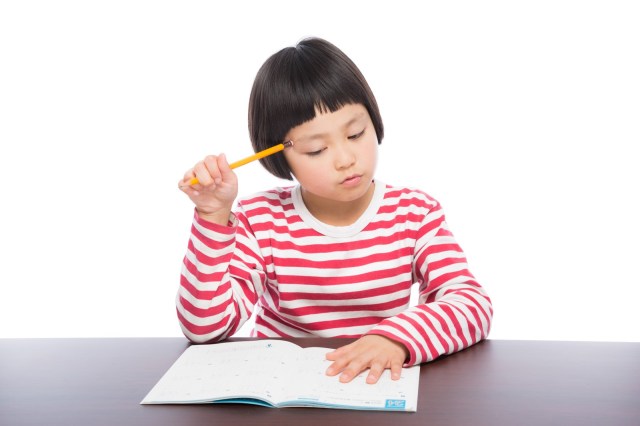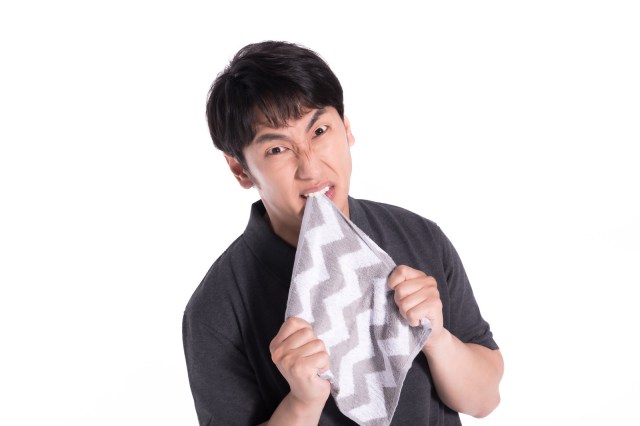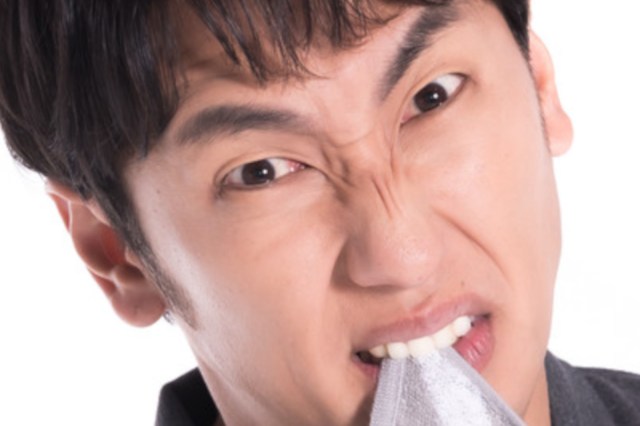
Because apparently three plus two equals morphophonology.
We’ve seen some strange questions on Japanese kids’ math homework before, but this recent one posted to the Internet by Japanese Twitter user @17_workout_kengot is on a different level. Or, at the very least, in a different school subject.
Here’s what they tweeted:
▼ “This is my daughter’s first-grade test. Huh? ‘Five birds’ is read as go-ba?? Is it because you’re being asked how many ba of birds there are instead of how many wa? What is this??”
https://twitter.com/17work_kengot/status/1194942130872913922
Let’s break down what’s going on here. First off, the translation of the math question:
“Question: There are 3 baby chicks. When 2 more baby chicks come, how many are there?
Answer: 5.”
Seems simple enough, but there’s something else going on here. For those unfamiliar, Japanese uses what’s called “counter words,” words that come after a number when counting certain things. Just like how in English we say two loaves of bread or three sticks of butter, Japanese does the same but with a lot more variety. In fact, sometimes too much variety.
Usually, birds are counted using the counter wa. One bird is ichi-wa, two birds are ni-wa, three birds are san-wa, and so on. However, in the above question, the teacher decided to forego using wa and used ba instead to count the chicks… for two out of three times.
Here’s what the question would look like halfway between Japanese and English:
“Question: There are 3-ba baby chicks. When 2-wa more baby chicks come, how-many-ba are there?
Answer: 5-wa.”
While the child got the math part of the question right, their 5-wa was marked incorrect and changed to 5-ba instead.
▼ Wa? Ba?? It’s making me angry enough to eat napkins!
Why does this matter? And why the discrepancy? Well friends, it’s time to go deep.
Anyone who’s studied Japanese before knows about the particle wa, used to mark the topic of a sentence. However, it has a bit of an oddity: instead of being written using the character わ (“wa”) it’s written using the character は (“ha”) instead.
This is because the particle used to be pronounced ha, but underwent a sound change, turning into wa. It’s kind of like how in English we still spell “knight” with a “k” at the beginning and a “gh” in there, even though they’re not pronounced anymore.
So, because of this sound change, other words that were originally pronounced with ha changed to wa, such as the counter for birds. While birds were counted using ha in the past, it’s rarely done today. Though not quite as bizarre as an English person pronouncing “knight” as “kuh-nig-uht,” it’s not too far off.
▼ I’m gonna eat the whole tablecloth at the Kuh-nig-uhts of the Round Table!
But wait a second! If it used to be ha, then what’s the deal with the ba in the math question? That’s due to another quirk of Japanese linguistics: morphophonology, the sound changes that take place when words combine together.
Depending on the number that comes before the counter, sometimes the counter changes to make the word flow more easily. For example, when counting “long cylindrical” things like pencils using hon, you say i-ppon, ni-hon, san-bon.
Similarly, back in the day before the sound change, instead of counting chicks as ichi-ha, ni-ha, san-ha, they would likely use i-ppa, ni-ha, san-ba.
But! Here’s the kicker. Even if birds were counted using ha (which they’re not really anymore), the teacher’s corrected answer of go-ba would still be wrong. The number for five (go) does not induce a change on the counter’s pronunciation. Just like you don’t say go-bon when counting five pencils (you say go-hon), go-ba is just not correct Japanese in any way.
Even the NHK’s broadcaster guide, the standard for Japanese spoken on the news, lists san-ba (“three birds”) and yon-ba (“four birds”) as possibilities, but not go-ba (“five birds”).
Basically the only way it’s correct is if the teacher made up her own counter word, and her distinction between it being wa or ba is based on whatever she wants.
▼ Waaaaa baaaaa!
At the end of the day, while the correction on the homework is a bit silly, at least we all got to learn a lot about Japanese linguistics.
And hey, as long as the assignment didn’t instill a sense of existential dread into the students, I’d call that a victory!
Source: Twitter/@17work_kengot via Itai News
Top image: Pakutaso
Insert images: Pakutaso
● Want to hear about SoraNews24’s latest articles as soon as they’re published? Follow us on Facebook and Twitter!




 “A dead bug” and other amusing, adorable, snarky, and downright ridiculous test responses
“A dead bug” and other amusing, adorable, snarky, and downright ridiculous test responses Uncle and netizens confused about child’s low grade on math assignment
Uncle and netizens confused about child’s low grade on math assignment The science behind why English speakers can’t pronounce the Japanese “fu”
The science behind why English speakers can’t pronounce the Japanese “fu” Counting in Japanese just became a whole lot easier with this handy infographic
Counting in Japanese just became a whole lot easier with this handy infographic Japanese elementary school kid says 12 x 25 = 300, teacher doesn’t say he’s answered correctly
Japanese elementary school kid says 12 x 25 = 300, teacher doesn’t say he’s answered correctly McDonald’s new Happy Meals offer up cute and practical Sanrio lifestyle goods
McDonald’s new Happy Meals offer up cute and practical Sanrio lifestyle goods All-you-can-drink Starbucks and amazing views part of Tokyo’s new 170 meter-high sky lounge
All-you-can-drink Starbucks and amazing views part of Tokyo’s new 170 meter-high sky lounge Studio Ghibli glasses cases let anime characters keep an eye on your spectacles
Studio Ghibli glasses cases let anime characters keep an eye on your spectacles Beautiful Sailor Moon manhole cover coasters being given out for free by Tokyo tourist center
Beautiful Sailor Moon manhole cover coasters being given out for free by Tokyo tourist center Mister Donut ready to make hojicha dreams come true in latest collab with Kyoto tea merchant
Mister Donut ready to make hojicha dreams come true in latest collab with Kyoto tea merchant Super Nintendo World expansion gets delayed for several months at Universal Studios Japan
Super Nintendo World expansion gets delayed for several months at Universal Studios Japan Is the new Shinkansen Train Desk ticket worth it?
Is the new Shinkansen Train Desk ticket worth it? Kyoto’s 100 Demons yokai monster parade returns!
Kyoto’s 100 Demons yokai monster parade returns! Hello Kitty/Yu-Gi-Oh crossover Happy Meal toys appear, but far, far away from Japan
Hello Kitty/Yu-Gi-Oh crossover Happy Meal toys appear, but far, far away from Japan The best cosplayers from Day 1 of Summer Comiket 2023【Photos】
The best cosplayers from Day 1 of Summer Comiket 2023【Photos】 Disney princesses get official manga makeovers for Manga Princess Cafe opening in Tokyo
Disney princesses get official manga makeovers for Manga Princess Cafe opening in Tokyo More foreign tourists than ever before in history visited Japan last month
More foreign tourists than ever before in history visited Japan last month Starbucks reopens at Shibuya Scramble Crossing with new look and design concept
Starbucks reopens at Shibuya Scramble Crossing with new look and design concept Beautiful new Final Fantasy T-shirt collection on the way from Uniqlo【Photos】
Beautiful new Final Fantasy T-shirt collection on the way from Uniqlo【Photos】 Foreign English teachers in Japan pick their favorite Japanese-language phrases【Survey】
Foreign English teachers in Japan pick their favorite Japanese-language phrases【Survey】 Japanese convenience store packs a whole bento into an onigiri rice ball
Japanese convenience store packs a whole bento into an onigiri rice ball We try out “Chan Ramen”, an underground type of ramen popular in the ramen community
We try out “Chan Ramen”, an underground type of ramen popular in the ramen community Studio Ghibli releases Kiki’s Delivery Service chocolate cake pouches in Japan
Studio Ghibli releases Kiki’s Delivery Service chocolate cake pouches in Japan Japan’s bone-breaking and record-breaking roller coaster is permanently shutting down
Japan’s bone-breaking and record-breaking roller coaster is permanently shutting down New definition of “Japanese whiskey” goes into effect to prevent fakes from fooling overseas buyers
New definition of “Japanese whiskey” goes into effect to prevent fakes from fooling overseas buyers Our Japanese reporter visits Costco in the U.S., finds super American and very Japanese things
Our Japanese reporter visits Costco in the U.S., finds super American and very Japanese things Studio Ghibli unveils Mother’s Day gift set that captures the love in My Neighbour Totoro
Studio Ghibli unveils Mother’s Day gift set that captures the love in My Neighbour Totoro Foreign passenger shoves conductor on one of the last full runs for Japan’s Thunderbird train
Foreign passenger shoves conductor on one of the last full runs for Japan’s Thunderbird train Domino’s Japan now sells…pizza ears?
Domino’s Japan now sells…pizza ears? New Japanese KitKat flavour stars Sanrio characters, including Hello Kitty
New Japanese KitKat flavour stars Sanrio characters, including Hello Kitty Kyoto creates new for-tourist buses to address overtourism with higher prices, faster rides
Kyoto creates new for-tourist buses to address overtourism with higher prices, faster rides Sales of Japan’s most convenient train ticket/shopping payment cards suspended indefinitely
Sales of Japan’s most convenient train ticket/shopping payment cards suspended indefinitely Sold-out Studio Ghibli desktop humidifiers are back so Totoro can help you through the dry season
Sold-out Studio Ghibli desktop humidifiers are back so Totoro can help you through the dry season Japanese government to make first change to romanization spelling rules since the 1950s
Japanese government to make first change to romanization spelling rules since the 1950s Ghibli founders Toshio Suzuki and Hayao Miyazaki contribute to Japanese whisky Totoro label design
Ghibli founders Toshio Suzuki and Hayao Miyazaki contribute to Japanese whisky Totoro label design Doraemon found buried at sea as scene from 1993 anime becomes real life【Photos】
Doraemon found buried at sea as scene from 1993 anime becomes real life【Photos】 Tokyo’s most famous Starbucks is closed
Tokyo’s most famous Starbucks is closed One Piece characters’ nationalities revealed, but fans have mixed opinions
One Piece characters’ nationalities revealed, but fans have mixed opinions We asked a Uniqlo employee what four things we should buy and their suggestions didn’t disappoint
We asked a Uniqlo employee what four things we should buy and their suggestions didn’t disappoint Princesses, fruits, and blacksmiths: Study reveals the 30 most unusual family names in Japan
Princesses, fruits, and blacksmiths: Study reveals the 30 most unusual family names in Japan Student takes mechanical pencil lead to the groin in a possible attempt to skip exam
Student takes mechanical pencil lead to the groin in a possible attempt to skip exam Here’s a funny anecdote about Japanese kindergartners (maybe) yelling “killing me” in unison
Here’s a funny anecdote about Japanese kindergartners (maybe) yelling “killing me” in unison Japanese elementary school student teaches us how to solve a difficult maths problem
Japanese elementary school student teaches us how to solve a difficult maths problem Math-solving phone app is the quickest way to self-study, skip homework, and/or fail your tests
Math-solving phone app is the quickest way to self-study, skip homework, and/or fail your tests “We wasted so much time in English class” — Japanese Twitter user points out major teaching flaw
“We wasted so much time in English class” — Japanese Twitter user points out major teaching flaw Chinese parenting posters from 1952 gave insightful advice that still makes plenty of sense today
Chinese parenting posters from 1952 gave insightful advice that still makes plenty of sense today Japanese university graduate students solve 2,000 year mathematical problem
Japanese university graduate students solve 2,000 year mathematical problem Stingy people rejoice as Japanese restaurants in New York introduce a ban on tipping
Stingy people rejoice as Japanese restaurants in New York introduce a ban on tipping Osaka fried chicken is sibling devourin’ good, implies morbidly funny ad
Osaka fried chicken is sibling devourin’ good, implies morbidly funny ad Japanese elementary school student teaches us all how to pronounce English like a native speaker
Japanese elementary school student teaches us all how to pronounce English like a native speaker Learn Japanese through ridiculous manga: A Tick on Titan 【Episode #3】
Learn Japanese through ridiculous manga: A Tick on Titan 【Episode #3】 Seven mistakes foreigners make when speaking Japanese—and how to fix them
Seven mistakes foreigners make when speaking Japanese—and how to fix them The surprising reasons why some hiragana aren’t allowed to be used on Japanese license plates
The surprising reasons why some hiragana aren’t allowed to be used on Japanese license plates The top 10 hardest Japanese words to pronounce – which ones trip you up?【Video】
The top 10 hardest Japanese words to pronounce – which ones trip you up?【Video】 What’s wrong with English education in Japan? Pull up a chair…
What’s wrong with English education in Japan? Pull up a chair…
Leave a Reply